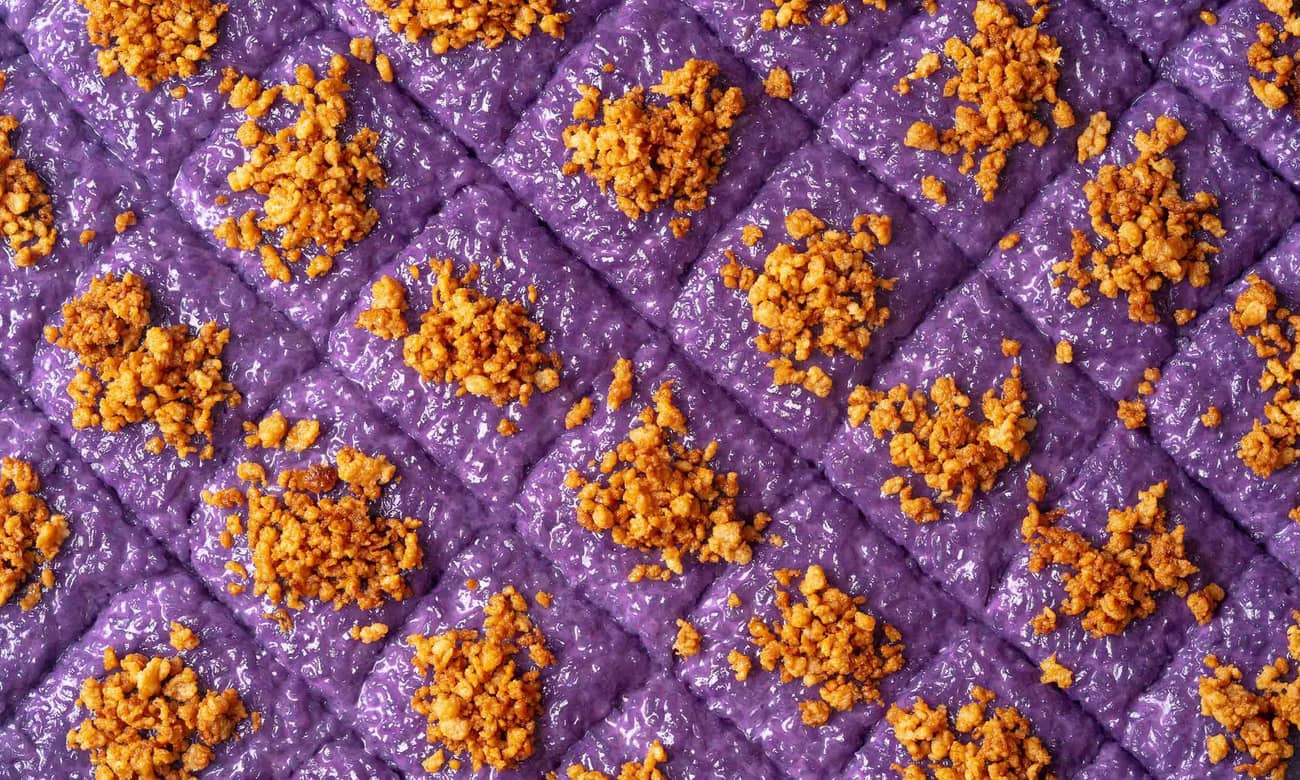
Make champorado, the rich Pinoy chocolate rice porridge, using tablea, water, and short-grain rice.
Champorado is a Filipino start-of-the-day staple that almost doubles as a dessert: chocolate rice porridge made with sticky rice (malagkit) and chocolate (usually tablea). It's creamy, sweet, and filling, best eaten on a cold day.

Filipino tablea or tableya, meaning "tablet", are pucks of pure chocolate. They are made with local cacao beans that have been fermented, dried, roasted, ground, and shaped into coins or balls. Tablea serves as the main ingredient for sikwate/tsokolate (Filipino-style hot chocolate) and champorado (chocolate rice porridge).
This recipe guides you through how to cook a perfect version of traditional tablea champorado. No fancy ingredients, no out-of-this-world techniques. A tried-and-tested method to make champorado that gives you the pure flavor of cocoa and the pure texture of malagkit in a thick, creamy soup.
Filipino champorado has roots in Mexican CHAMPURRADO, a hot beverage made with chocolate, sugar, milk, and masa harina, the corn flour used to make tortillas.
The chocolate drink reached Philippine shores in the 17th century through the Manila-Acapulco galleon trade. Since we didn't have masa, locals used malagkit (glutinous rice) instead. The drink eventually evolved into a sweet chocolate porridge to enjoy for breakfast or on rainy days.
Malagkit, or glutinous rice, is a non-negotiable ingredient in champorado. It gives the porridge its texture, from the chewy grains to the extra starch that helps thicken your champorado. Regular rice won't give you the same consistency.
You'll usually find two kinds of malagkit in the market: regular and long-grain.
Which kind should you use? Honestly, any type of malagkit rice will do. If you can't find glutinous rice, sushi rice will work as a substitute.

If texture is your goal, take a page from our chicken arroz caldo recipe and use equal parts malagkit and jasmine rice.
When cooked, jasmine rice gets you distinct, fluffy grains with a chewy bite—a nice textural contrast to creamy, risotto-like malagkit.
To substitute, use a half cup of malagkit and jasmine rice each, and follow the recipe as is.
Champorado is traditionally cooked in plain water. In developing this recipe, we wanted to see how swapping the water for milk will affect the final champorado. Milk is creamy and tasty—surely it will make the champorado creamier and tastier, too?
We cooked three test champorados in different liquids: water, regular milk, and evaporated milk. Since milk doesn't have enough water content, and using just milk can be expensive for home cooks, we cut the milk with equal parts water.

Surprisingly, the tests showed no discernible difference in champorado texture and creaminess. Malagkit played a bigger factor than milk—its starchiness made all our test bowls equally creamy. Keep it simple and use water!
Champorado is usually made with tablea, but some home cooks prefer cocoa powder as a convenient alternative. Modern kitchens may use sweetened chocolate chunks or chips. We tested all three options—in all three liquid tests above—to see which one worked best.


Tablea produced the most intense cocoa flavor. We like sweetened tablea, which gives it a nice balance of sweetness and bitterness.
If using unsweetened tablea, add two tablespoons of sugar to achieve the same flavor.
Cocoa powder is a cheap and convenient alternative to tablea—we even recommend it as an alternative to recipes that call for crushed tablea. But depending on the brand, some cocoa powders can taste artificial or less chocolatey compared to tablea.
For cooks outside the Philippines, chocolate chips will be more accessible than Filipino tablea. Expect the flavor to taste more like a chocolate candy bar—more Western-leaning than a traditional champorado, which leans more hot chocolate-like in flavor.
If you're working with non-tablea chocolate, we suggest using a combination of dark and milk chocolate bars with our Double Chocolate Champorado recipe instead.
Our tests prove that you don't need to mess with the classic champorado: just rice, water, and tablea will make the perfect bowl for a rainy day. Don't forget to adjust to taste with sugar and milk!

Cook rice: Add uncooked rice and water in a large pot over high heat. Bring to a boil, stirring occasionally to prevent clumping. Once boiling, stir again to break up clumps of rice. Reduce heat to low and simmer, stirring occasionally, about 10-15 minutes or until rice is tender.
Once the rice is tender, increase the heat to high. Stir the rice vigorously to break up the grains and release the starches until mixture is thick and creamy, about 10 minutes.
Add tablea: Reduce heat to medium and add the tablea. Stir until tablea is completely dissolved and distributed. Remove from heat and divide between bowls. Serve warm, with a drizzle of milk if desired.
Yes! If using unsweetened tablea, add 2 tablespoons white sugar.
If you're not using tablea, check out our Double Chocolate Champorado recipe. It uses a mix of dark and milk chocolate!
Though not as traditional as tuyo or galunggong, we like danggit for three reasons:
We found that danggit has a less fishy flavor compared to tuyo and galunggong—whether that's a good or bad thing is up to you.
Tuyo tastes fishier and saltier. Galunggong brings a delicious smoked flavor, but adds little texture as a champorado topping.
